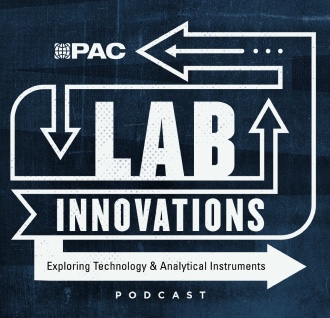Nov-2023
Minor changes for major results: Reduce, reuse, and repurpose (ERTC 2023)
Transformational change within a refinery can be challenging to navigate. New policies that incentivise sustainability also require significant investment.
Matthew Clingerman
Sulzer Chemtech
Viewed : 1589
Article Summary
Concurrently, high asset utilisation in a challenged process environment leads to a question of ongoing profitability. Greenfield investments can yield sizeable returns, but a focus solely on grassroots units ignores the possibilities found in revamping existing assets.
The right decarbonisation-related revamps can also increase profitability. However, revamps often come with challenges such as feedstock compatibility, safety, and operational efficiency. For example, waste plastics pyrolysis oils or biomass-based feeds raise concerns about mechanical reliability and long-term operability of the redesigned unit. Successfully navigating these challenges requires enhancing margins and improving unit and operational flexibility to shift as markets change.
Reconsider core assets
Some process units, such as off-gas treating and hydrotreaters, have become core operations that ensure refineries meet modern clean air and clean fuel regulations. Other units, such as aromatic extraction, improve margins and produce valuable petrochemicals. Revamps of these units have been viewed through the lens of optimisation and profitability. The goal has been to extract maximum value from a barrel of oil. However, taking a second look at all units throughout the refinery can uncover revamp opportunities that also offer another step towards achieving decarbonisation goals.
With these objectives in mind, Sulzer Chemtech partnered with refineries to discover new ways to reduce carbon emissions, increase production of high octane gasoline, and enable the switch to renewable fuels.
Mitigate carbon emissions in gas processing
Inefficient gas treating operations are a significant source of CO₂ emissions. LPG from mixed fuel gas streams is difficult to recover and typically requires a multi-column approach. This high Capex arrangement also has higher utility consumption. Alternatively, GT-LPG MaxTM (see Figure 1) provides a cost-effective solution for recovering the LPG product using the concept of absorption plus distillation within the same fractionating vessel. This process separates lights, intermediates, and heavies in a single column with the top dividing wall, which divides the top of the column into absorption and fractionation sections. Feed is supplied to the absorption section, where a heavy liquid recovers the C₃ and C₄ components, and non-condensables are sent overhead. The fractionation side concentrates and collects the C₃.
In addition to reduced capital and operating expenses, benefits of using a single dividing wall column include higher recovery of valuable components, lower emissions through reduced energy usage, and the potential to debottleneck downstream units or shift to increased petrochemical production.
A major petrochemical plant in Asia recently commissioned and now operates a GT-LPG Max unit. The unit treats a portion of the off-gases which had been fed to one of two fuel gas treating units. The unit was severely bottlenecked, so C₃ and C₄ were being sent to the flare, which reduced product revenue and increased CO₂ emissions. Using GT-LPG Max technology, this plant accomplished three goals: reduce carbon emissions, debottleneck the unit, and produce a C₃ stream suitable as steam cracker feedstock.
Produce high-octane gasoline
GT-BTX PluS™ is an extractive distillation process that enhances the volatility of non-aromatic compounds in a mixture also containing aromatics. The process consists of only two major columns: an extractive distillation column (EDC) and a solvent recovery column (SRC) (see Figure 2). The solvent, a proprietary blend from Sulzer called TECHTIVTM, recirculates between the two columns to extract the aromatics and sulphur components while rejecting the non-aromatics, including olefins, to be the raffinate.
GT-BTX PluS is especially helpful in an FCC gasoline hydrotreater. Mercaptans and olefins are the dominant species in the lighter fraction, and thiophenes and aromatics are dominant in the heavier cuts. The heaviest fraction has few olefins species to impact the desulphurisation (HDS) unit. However, the heavy naphtha stream in a gasoline hydrotreater also contains middle-boiling components that are primarily olefins and thiophenic hydrocarbons. This mid-cut naphtha is most susceptible to olefin saturation in the HDS units and, consequently, octane loss.
An example of a revamp with GT-BTX PluS is highlighted in Figure 3. Here, heavy naphtha is routed to a new splitter, from which the olefin-rich mid-cut is sent to a new GT-BTX PluS unit. A benzene concentrate stream will be co-processed in the new unit as well. The raffinate from GT-BTX PluS, containing the olefins, goes directly to the gasoline product. The extract, containing the sulphur and aromatic molecules, is mixed with the heavy naphtha and then treated in the existing HDS unit. A second new column is added to recover high-purity benzene.
With GT-BTX PluS, the final treated gasoline product has retained most of the olefins, which leads to a reduction in RON of only 0.4 instead of 3.0. Hydrogen consumption is reduced by more than half, as the HDS unit now operates more efficiently and at lower capacity with the MCN removed. In this example, additional revenue is gained from the new benzene stream and expansion of the gasoline pool. In a revamped unit using GT-BTX PluS, the gasoline hydrotreater could produce cleaner-burning gasoline while at the same time reducing utility consumption and, ultimately, a reduction in Scope 1, 2, and 3 emissions.
Switch to sustainable Aviation Fuel
SAF produced via hydrotreating of fats, oils, and greases can reduce lifecycle CO₂ emissions from the aviation sector compared to petroleum fuels. BioFlux technology, developed to offer superior hydrotreating performance, is a versatile process to maximise the yield of SAF from biomass-based feeds. The process operates with a liquid full reactor, where all hydrogen necessary for the reactions is dissolved into the feed at the reactor inlet. A portion of the reactor effluent is recycled to be premixed with the feed (see Figure 4), which provides both a diluent for carrying more hydrogen and a heat sink for controlling the reaction exotherm. The reactor design maximises volumetric flux, and the proprietary reactor internals ensure that the feed and hydrogen are completely mixed and evenly distributed for complete catalyst wetting. Additional advantages of BioFlux also include:
● Higher liquid yield by eliminating over-cracking to undesirable products
● Efficient hydrogen and thermal management
● Lower capital and operating expense by using liquid only instead of a gas recycle.
BioFlux technology also has the lowest carbon intensity compared to other technologies in renewable hydrotreating applications. This is achieved through higher yield, lower utility consumption, and utilisation of gas and naphtha product streams for hydrogen generation.
Your partner in sustainability
At Sulzer, our objectives are to enable a low-carbon society and build a more sustainable future. With decarbonisation at our core, we provide technologies that optimise production capacity and reduce operating cost while minimising environmental impact. Our unique offerings are ideal for helping refiners reduce their carbon footprint and achieve their decarbonisation goals.
This short article originally appeared in the 2023 ERTC Newspapers, which you can VIEW HERE
Sponsor:
Categories:
Add your rating:
Current Rating: 3

















